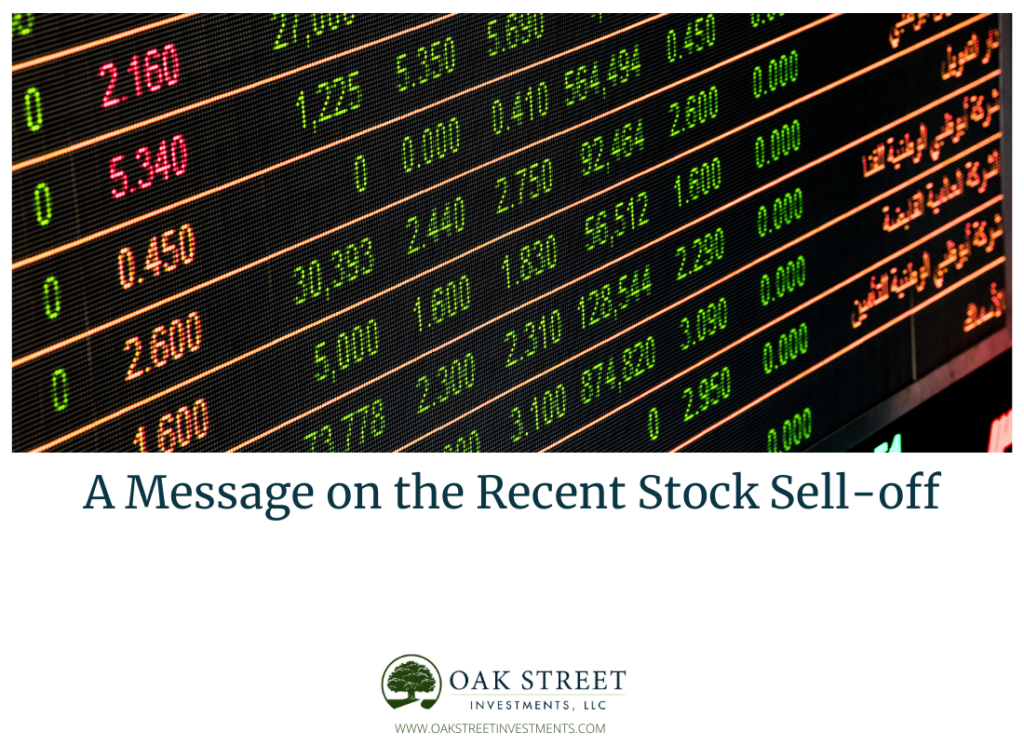
Volatility 2.0
This post is taken from an email sent March, 2020.
After speaking with colleagues across the country, I’ve decided to once again share some thoughts about the recent market volatility (see initial commentary here). While some advisors believe communicating during these times trains clients to expect a response during every market selloff, I believe it’s important to respond to the questions I’ve been receiving in hopes of putting the recent volatility into historical context to help you focus on your long-term investing goals.
It’s never easy to watch your account values go down. Even when starting with a value driven up by the longest bull market in history, we know from many studies that the pain of wealth loss is far greater than that of corresponding gain. Here are some things that may help you remain disciplined (invested):
- Since 1926 (when data became reasonably reliable) there have been 11 Bear Markets and 12 Bull markets.
- The average Bear market lasted 1.3 years while producing total losses of 38%.
- The average Bull market lasted 6.6 years and produced average cumulative gains of 339%.
- According to JP Morgan, six of the 10 best days (in the history of the stock market) have occurred within two weeks of the 10 worst days. Missing even just one of these days will materially impact your investment returns.
- There are simply no reputable publications or rigorous examinations concluding that market timing (choosing when to be in the market versus out of the market) works. There are a number of studies, however, indicating the predictably poor results of trying.
- According to an annual Dalbar study, the average stock mutual fund investor has significantly underperformed the stock market over the past 1, 10 and 30 year periods, no matter what time periods you examine! The vast majority of this underperformance can be attributed to market timing.
- As i wrote in my initial commentary on volatility, an investor’s inclination to sell or buy is strongly inversely correlated to the proper time to do so.
The probability that the US – and perhaps the global economy – will fall into a recession is increasing daily, and I believe we are only beginning to see the economic (and societal) impacts of the Coronavirus. I expect continued volatility and likely more losses for the stock market in the coming days, weeks, months or more: If your investment time horizon is measured in weeks, months or even a few years, you should not be in stocks.
However, disciplined investors know that over long periods of time there are few, if any, asset classes that provide the returns of stocks. Disciplined investors know, as we discuss in our client onboarding process, the importance of proper diversification of stocks and bonds, and maintaining a long-term investment horizon. If your investment objectives and time horizon have not changed (other than being one day older), studies have consistently shown that your best course of action, difficult as it may be, is to remain invested. As I’ve mentioned before, zoom out, turn off the TV and focus on what you can control – how you respond to the market volatility. As always, please reach out or schedule time on my calendar if I can be of service.

[…] time to invest, but we know it’s usually when there’s the least amount of light, the least certainty and greatest discomfort. This is certainly a time of great […]
[…] Interventions – To date, the Federal Reserve and Congress have taken swift actions to get money into the American economy, both directly to consumers via helicopter money […]
[…] the end of February, as the global markets were in a free-fall, I wrote my first of two articles on volatility. In it, I said “It’s okay to evaluate your overall allocation to […]
[…] #1: I have a fairly high degree of confidence that the volatility seen in both the equity and bond markets will continue for the foreseeable future. The Federal […]